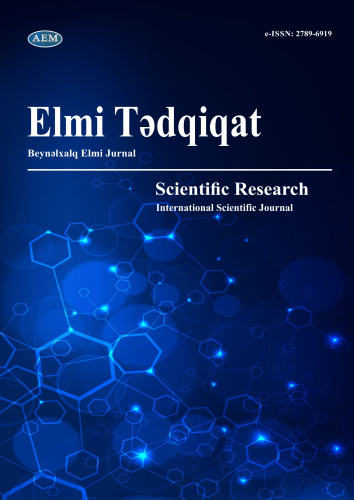DOI: https://doi.org/10.36719/2789-6919/16/20-22
Səbinə Əbülfət qızı Cəfərova
Gəncə Dövlət Universiteti
dissertant
BAĞLAYICI SÖZLƏRLƏ BAĞLANAN KORRELYATİV QURULUŞLU CÜMLƏLƏR
Xülasə
Məlumdur ki, bağlayıcı söz işlənən budaq cümlədən sonra gələn baş cümlədə onun qarşılığı- korrelyatlar işlənir və ya nəzərdə tutulur; korrelyat, bir növ, bağlayıcı sözlə simmetriya təşkil edir. Qarşılaşdırma budaq cümləsində işlənən və bağlayıcı sözə bənzəyən nə qədər, bəzən də hər nə qədər tipli sözlərin qarşısında (baş cümlədə) həmin sözlərə simmetrik vəziyyətdə baş cümlənin məzmununa uyğun bir sıra leksik-qrammatik vahidlər işlənir: yenə, daha, indi, həmişə, hələ və s. Lakin onları korrelyat saymaq olmaz, çünki korrelyatlar cümlənin növünü müəyyənləşdirir, göstərilən sözlər, sadəcə olaraq, qarşılaşdırma məzmununu qüvvətləndirir və tabeedici intonasiyanın rolunu nisbətən zəiflədir.
Açar sözlər: cümlə quruluşları, plan, sintaktik funksiya, məzmun, reduksiya
Sabina Abulfat Jafarova
Ganja State University
Dissertatist
Sentences with a correlative structure
Abstract
It is known that in the main sentence following the branch sentence in which the connecting word is used, its counterpart-correlates are used or implied; correlate, in a way, forms symmetry with the connecting word. A number of lexical-grammatical units corresponding to the content of the main sentence are used symmetrically to those words (in the main clause) in front of words of the type "how much" and "however" that are similar to the connecting word used in the matching branch sentence: again, more, now, always, yet, etc. But they cannot be considered as correlates, because correlates determine the type of the sentence, the indicated words simply strengthen the content of the contrast and relatively weaken the role of subordinating intonation.
Keywords: sentence structures, plan, syntactic function, content, reduction

